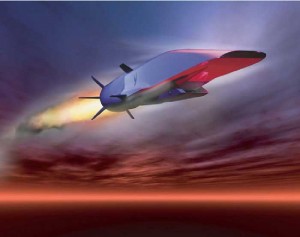2014-01-10 By Robbin Laird, Ed Timperlake and Murielle Delaporte
As the United States faces the future and needs to come to terms with the past decade, what will be its military strategy?
The answer to this question is not likely to come in briefing slides but in shaping concrete steps towards the future as well as in shaping responses to new and ongoing crises.
Although nationally based, any U.S. military strategy for the decade ahead and beyond will be dependent on what U.S. allies and adversaries do. It will not be forged in a vacuum. It will be highly interactive with the shaping of new operational concepts and approaches.
Indeed, when the United States deals with a massive challenge such as shaping a strategy for the vast Pacific with limited assets, it is impossible to imagine a strategy that does not build from allies back to the United States and from the United States back to allies. Critics, who point out the shortfalls of US forces, often forget that not only does no platform fight alone, but also neither will the U.S. in the Pacific.

And there is always the reactive enemy. Often the term is used of an asymmetric enemy or strategy. But strategy is usually asymmetric, as one seeks to enhance one’s advantages to the disadvantage of the other. And this occurs the other way as well, whereby the U.S. and its allies can shape capabilities that severely disadvantage an adversary.
With financial pressures has come a new pessimism, which seeks to reduce the problems facing the U.S. to those that can be solved by yesterday’s force structure. But with the force being remade by new technologies ripening in the decade ahead, there are significant possibilities for innovation and re-shaping of the force structure.
But the decade ahead is assuredly not the decade behind.
Most notably, this is not a decade of the type of land wars we have just seen, which are ending without enthusiastic chants of victory.
To provide a sense of how U.S. strategy might be shaped in the decade ahead, we will address four current operational dynamics, which can be leveraged to shape the future.
And these dynamics cross the spectrum of conflict.
The first case is the Afghan transition. Here we will look at an aspect of the transition, namely the airpower transition, and see how this transition might be leveraged to shape a residual leave behind capability important to the United States and which could shape a global model for other situations.
The second case expands the understanding of the key role of expeditionary logistics in shaping an insertion force, which can operate with rapidity, but also transition effectively. The French operation in Mali is a key expression of the new approach to how land power operates within the context of a joint and coalition force structure.
The third case will examine the emergence of distributed military operations in the Pacific lead by the USMC-USN team. Here the maritime force is driving innovation approach to the challenges. Jointness is a quality of the operation of 21st century forces, but for innovation to occur, there needs to be a lead force, drawing on its core competencies to shape the way for the joint and coalition force.
The fourth case examines the challenge of dealing with the deterrence of North Korea in the second nuclear age. At the heart of deterring North Korea is the enhancement of the credibility of the American and allied forces facing North Korea. How might reform of the U.S. presence in South Korea be part of a broader re-design of deterrent strategy? Here the U.S. Air Force is the lead force driving the kind of innovation necessary to deal with the challenge of North Korean deterrence and leading the way in re-shaping the force structure to deal with the threats of the second nuclear age.
We are publishing in five parts a full draft of the article which appeared recently in Joint Force Quarterly.
Joint Force Quarterly, No. 72, January 2014
http://www.ndu.edu/press/leveraging-challenges.html

